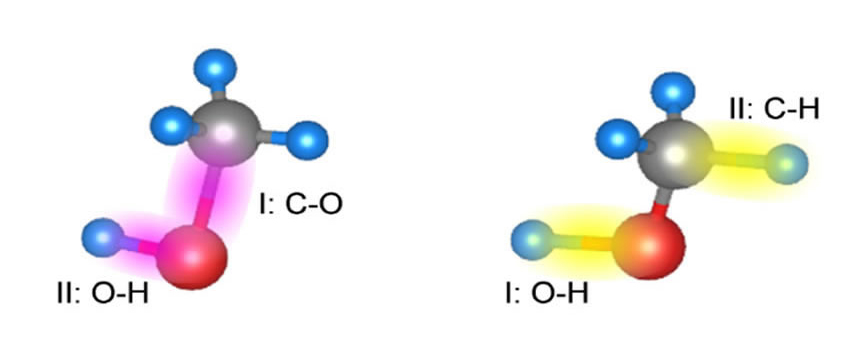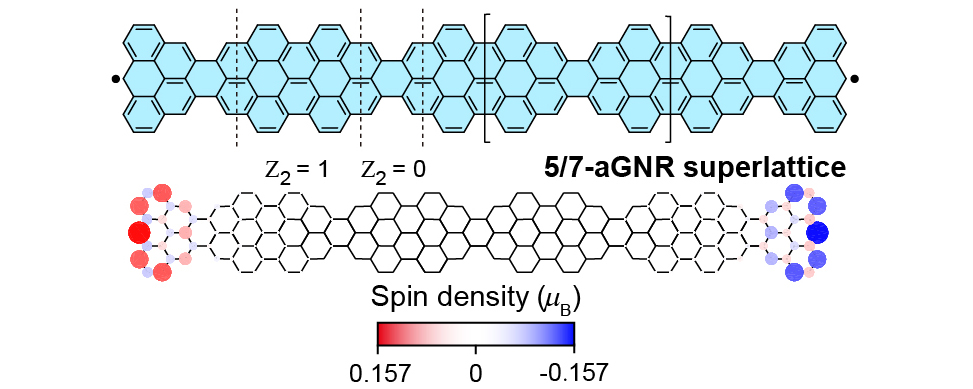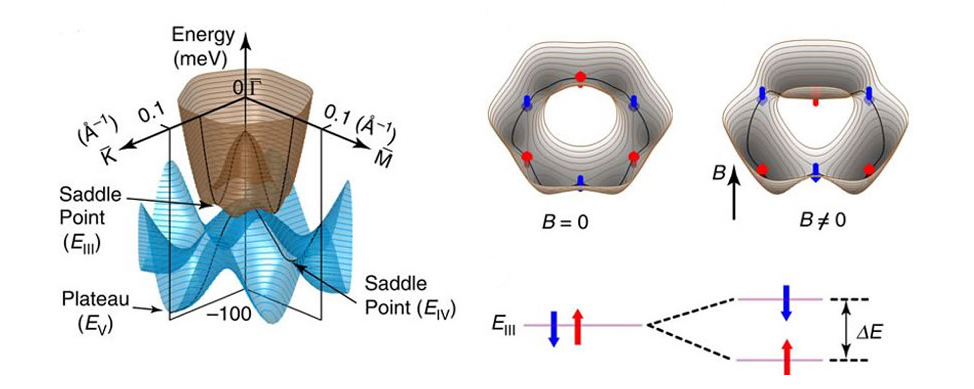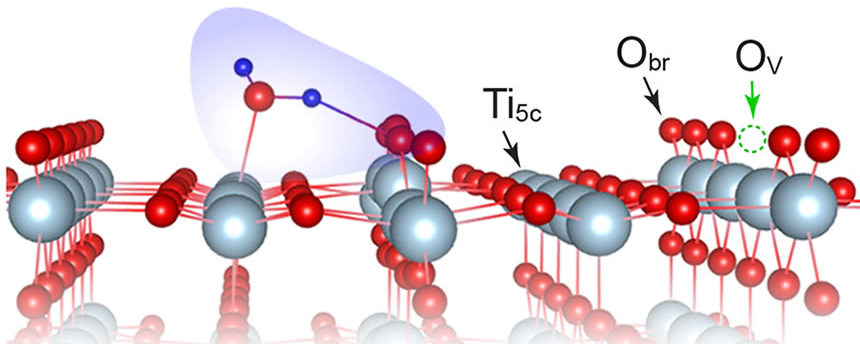Single-molecule Chemistry

We develop scanning tunneling microscopy (STM), non-contact atomic force microscopy (AFM) and tip-enhance Raman spectroscopy (TERS) to investige and control the electronic, geometric and vibrational properties of single molecules.
Representitive Works
The Joint STM-AFM-TERS Method
Determining Structural and Chemical Heterogeneities of Surface Species at the Single-bond Limit
Science 371, 818-822 (2021)
Bond-selective Control of Single Molecules
Science 371, 818-822 (2021)
Controlling the Kondo Effect of an Adsorbed Magnetic Ion Through Its Chemical Bonding
Science 309, 1542-1544 (2005)
Topology of Two-dimensional C60 Domains
Nature 409, 304-305 (2001)
Controlling the Electroic Properties of Single Molecules
Science 309, 1542-1544 (2005)
Topology of Two-dimensional C60 Domains
Nature 409, 304-305 (2001)
Mechanism for Negative Differential Resistance in Molecular Electronic Devices: Local Orbital Symmetry Matching
Physical Review Letters 99, 146803 (2007)
Design and Control of Electron Transport Properties of Single Molecules
Proceedings of the National Academy of Science of the United States of America 106, 15259-15263 (2009)
Molecular Molds for Regularizing Kondo States at Atom/Metal Interfaces
Nature Communications 11, 2566 (2020)
Physical Review Letters 99, 146803 (2007)
Design and Control of Electron Transport Properties of Single Molecules
Proceedings of the National Academy of Science of the United States of America 106, 15259-15263 (2009)
Molecular Molds for Regularizing Kondo States at Atom/Metal Interfaces
Nature Communications 11, 2566 (2020)
On-surface Synthesis

Based on rationally designed organic precursor molecules, graphene nanoribbons (GNRs) and polymers with atomic precision can be synthesized from on-surface reactions. The structural, electronic, spintronic and vibrational properties will be investigated by STM, AFM, TERS, and the state-of-the-art electron spin resonance (ESR)-STM.
Representitive Works
Structural Heterogeneity Engineering of GNRs
Self-Limited Embedding Alternating 585-Ringed Divacancies and Metal Atoms into Graphene Nanoribbons
Journal of the American Chemical Society 145, 8445–8454 (2023)
Step-Assisted On-Surface Synthesis of Graphene Nanoribbons Embedded with Periodic Divacancies
Journal of the American Chemical Society 144, 14798–14808 (2022)
Graphenoids with Non-hexagonal Rings
Journal of the American Chemical Society 145, 8445–8454 (2023)
Step-Assisted On-Surface Synthesis of Graphene Nanoribbons Embedded with Periodic Divacancies
Journal of the American Chemical Society 144, 14798–14808 (2022)
Biphenylene Network: a Nonbenzenoid Carbon Allotrope
Science 372, 852-856 (2021)
On-Surface Synthesis and Characterization of a Cycloarene: C108 Graphene Ring
Journal of the American Chemical Society 142, 894–899 (2020)
Nanoribbons with Nonalternant Topology from Fusion of Polyazulene: Carbon Allotropes beyond Graphene
Journal of the American Chemical Society 141, 17713–17720 (2019)
Template-controlled On-surface Synthesis of a Lanthanide Supernaphthalocyanine and its Open-chain Polycyanine Counterpart
Nature Communications 10, 5049 (2019)
Topological nontrivial GNRs
Science 372, 852-856 (2021)
On-Surface Synthesis and Characterization of a Cycloarene: C108 Graphene Ring
Journal of the American Chemical Society 142, 894–899 (2020)
Nanoribbons with Nonalternant Topology from Fusion of Polyazulene: Carbon Allotropes beyond Graphene
Journal of the American Chemical Society 141, 17713–17720 (2019)
Template-controlled On-surface Synthesis of a Lanthanide Supernaphthalocyanine and its Open-chain Polycyanine Counterpart
Nature Communications 10, 5049 (2019)
Topologically Localized Vibronic Excitations in Second-layer Graphene Nanoribbons
Physical Review Letters accepted (2024)
Remote-triggered Domino-like Cyclodehydrogenation in Second-layer Topological Graphene Nanoribbons
Journal of the American Chemical Society 145, 10126–10135 (2023)
Physical Review Letters accepted (2024)
Remote-triggered Domino-like Cyclodehydrogenation in Second-layer Topological Graphene Nanoribbons
Journal of the American Chemical Society 145, 10126–10135 (2023)
Low-dimensional Materials

We use molecular beam epitaxy (MBE), pulse laser deposition (PLD), chemical vapor deposition (CVD) methods to epitaxially grow low-dimensional materials of stanene (Sn), Bismuth (Bi) and graphene, and investigate their quantum properties by using STM and ARPES.
Representitive Works
Discovery of the Topological Band Inversion in Ultraflat Sn Films
Epitaxial Growth of Ultraflat Stanene with Topological Band Inversion
Nature Materials 17, 1081–1086 (2018)
Surface Landau Levels and Spin States in Bismuth(111) Ultrathin Films
Nature Materials 17, 1081–1086 (2018)
Creation of the Dirac Nodal Line by Extrinsic Symmetry Engineering
Nano Letters 20, 2157–2162 (2020)
Surface Landau Levels and Spin States in Bismuth(111) Ultrathin Films
Nature Communications 7, 10814 (2016)
Novel Electronic Properties in Graphene
Nano Letters 20, 2157–2162 (2020)
Surface Landau Levels and Spin States in Bismuth(111) Ultrathin Films
Nature Communications 7, 10814 (2016)
Evidence of van Hove Singularities in Ordered Grain Boundaries of Graphene
Physical Review Letters 112, 226802 (2014)
Tuning the Doping Types in Graphene Sheets by N Monoelement
Nano Letters 18, 386–394 (2018)
Landau Quantization of a Narrow Doubly-folded Wrinkle in Monolayer Graphene
Nano Letters 18, 6710–6718 (2018)
Physical Review Letters 112, 226802 (2014)
Tuning the Doping Types in Graphene Sheets by N Monoelement
Nano Letters 18, 386–394 (2018)
Landau Quantization of a Narrow Doubly-folded Wrinkle in Monolayer Graphene
Nano Letters 18, 6710–6718 (2018)
Oxides' Surfaces and Interfaces

The transition metal oxides hold versatile physical and chemical properties from catalysis to superconductivity, which have attracted considerable research interests for many years. However, the geometric and eletronic properties of oxides are still elusive.
Representitive Works
Titanium Dioxide (TiO2) Surface: Epitaxial Growth, Structure and Defects
Role of Point Defects on the Reactivity of Reconstructed Anatase Titanium Dioxide(001) Surface
Nature Communications 4, 2214 (2013)
Catalysis and Photocatalysis on TiO2
Nature Communications 4, 2214 (2013)
Interfacial Hydrogen-Bonding Dynamics in Surface-Facilitated Dehydrogenation of Water on TiO2(110)
Journal of the American Chemical Society 142, 826–834 (2020)
Observation of Photocatalytic Dissociation of Water on Terminal Ti Sites of TiO2(110)-1×1 Surface
Journal of the American Chemical Society 134, 9978–9985 (2012)
Molecular Oxygen Adsorption Behaviors on the Rutile TiO2(110)-1×1 Surface: An in Situ Study with Low-temperature Scanning Tunneling Microscopy
Journal of the American Chemical Society 133, 2002–2009 (2011)
What are the Adsorption Sites for CO on the Reduced TiO2(110)-1×1 Surface?
Journal of the American Chemical Society 131, 7958–7959 (2009)
The Electroic Properties of Oxides
Journal of the American Chemical Society 142, 826–834 (2020)
Observation of Photocatalytic Dissociation of Water on Terminal Ti Sites of TiO2(110)-1×1 Surface
Journal of the American Chemical Society 134, 9978–9985 (2012)
Molecular Oxygen Adsorption Behaviors on the Rutile TiO2(110)-1×1 Surface: An in Situ Study with Low-temperature Scanning Tunneling Microscopy
Journal of the American Chemical Society 133, 2002–2009 (2011)
What are the Adsorption Sites for CO on the Reduced TiO2(110)-1×1 Surface?
Journal of the American Chemical Society 131, 7958–7959 (2009)
Formation of Plasmonic Polarons in Highly Electron-doped Anatase TiO2
Nano Letters 21, 430–436 (2021)
Interfacial Polarons in van der Waals Heterojunction of Monolayer SnSe2 on SrTiO3(001)
Nano Letters 20, 8067–8073 (2020)
Nano Letters 21, 430–436 (2021)
Interfacial Polarons in van der Waals Heterojunction of Monolayer SnSe2 on SrTiO3(001)
Nano Letters 20, 8067–8073 (2020)



